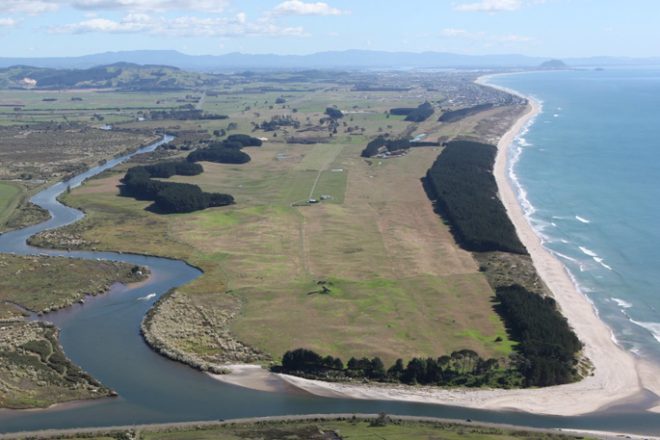Maaaring nahihirapan ang konseho ng lungsod sa Tauranga upang makahanap ng mga kinakailangang pondo para sa mga bagong kalsada na inilaan upang mapadali ang pag-unlad ng pabahay sa silangang bahagi ng Mahalaga ang mga kalsada para sa lugar ng Te Tumu, inaasahang tumanggap ng 15,500 residente kapag natapos. Ang pag-unlad ay nangangailangan ng dalawang pangunahing ruta ng transportasyon, na tinatayang nagkakahalaga ng humigit-kumulang $400 milyon, na nagpapalawak ng The Boulevard at Te Okuroa Drive sa Pāpāmoa. Kung hindi maisiguro ng konseho ang kinakailangang pagpopondo, maaari nitong madagdagan ang gastos ng bawat bagong bahay ng $27,000.
Ipinaliwanag ng tagapamahala ng pagpaplano at paglago ng lungsod, si Andy Mead, na nagsimulang magpaplano ng konseho para sa mga kalsada apat na taon Gayunpaman, ang patakaran sa pagpopondo ng NZ Transport Agency na Waka Kotahi para sa mga arteryal na kalsada sa mga bagong lugar ng pag-unlad ay nagbago nang malaki mula noon. Sinasaklaw ng ahensya ang kalahati ng gastos, ngunit ngayon hindi nila pinopondohan ang mga kalsada na ito o nag-aambag lamang ng isang maliit na bahagi.
Sinabi ni Mead na kasalukuyang naghahanap sila ng pag-apruba, hindi pagpopondo, para sa mga kalsada ng Te Tumu dahil walang nakumpirma na timeline para sa pag-unlad. Ang pabahay sa Te Tumu ay hindi inaasahang magagamit hanggang 2040, isinasaalang-alang ang oras na kinakailangan para sa pag-unlad ng lupa at gawaing sibil.
Kasama sa ginustong disenyo ng konseho para sa The Boulevard ang dalawang dedikadong mga lane ng bus at dalawa para sa pangkalahatang trapiko, habang ang Te Okuroa Drive ay magiging isang apat na lane na daan na may dalawahang bisikleta sa isang panig at isang nakabahaging landas sa kabilang banda. Ang mga ito ay magiging ‘limitadong access roads’, na walang mga driveway na humahantong sa kanila, ngunit ang mga interseksyon sa mga lokal na kalsada.
Kung makatanggap lamang ang konseho ng 10% subsidyo na $40 milyon, sa halip na kalahati, ang natitirang pondo ay kailangang mapagkukunan sa ibang lugar. Kung hindi matatagpuan ang panlabas na pagpopondo, kakailangang sakupin ng mga developer ang mga gastos, na potensyal na dagdagan ang presyo ng 6,000 mga tahanan ng Te Tumu ng karagdagang $27,000 bawat isa.
Nilinaw ni Jess Andrew, NZTA Bay of Plenty at Waikato regional manager system design, na ang National Land Transport Fund ay hindi nag-aambag sa mga gastos sa paglago kung saan ang isang pribadong developer ang pangunahing benepisyaryo. Ang pampublikong pamumuhunan ay dapat na naka-target patungo sa paghahatid ng pampublikong benepisyo, at ang mga gastos sa paglago ay dapat sakop ng mga lokal Gayunpaman, ang anumang mga gawa na nagbibigay ng “mas malawak na benepisyo ng publiko” ay karapat-dapat para sa pagpopondo Ang kaso ng negosyo ay isinasumite sa NZTA para sa pag-apruba ng mga ginustong pagpipilian para sa mga ruta ng transportasyon ng Te Tumu.



















































-360x245.jpg)










